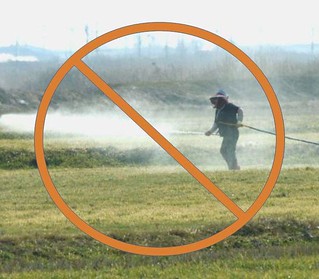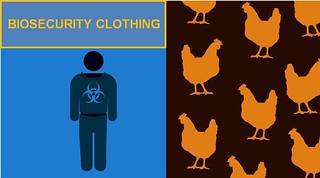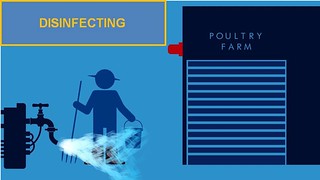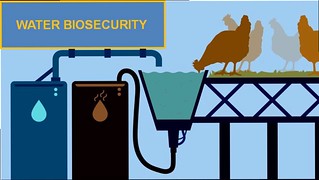Migratory birds are more the VICTIM than the culprit of bird flu
Migratory waterbirds such as ducks, geese, swans and shorebirds can carry the harmless, low pathogenic form of the avian influenza virus. This virus can spread from one bird to another without making the bird sick. If the virus turns up in a poultry farm where many chickens and ducks live in crowded and unhygienic conditions, the virus can turn into a harmful, high pathogenic form. This harmful virus can spread rapidly among poultry, and most of the infected birds die shortly afterwards. Finally, the evolved harmful virus can get back into wild waterbirds, spread among them and kill them too.
The solution is NOT chasing away or killing wild birds
Problem
We often hear in the media that migratory birds bring in or spread bird flu. Thus people mistakenly believe that wild birds introduce the harmful form of the virus into their farms, which can then kill their poultry, and make people sick. This fear sometimes leads them to chase or even kill wild birds. Chasing wild birds away is counterproductive - if they are already sick they can spread the infection. Spraying disinfectant into natural wetlands to kill the virus causes a lot of damage to the ecosystem and is an ineffective way to combat the virus. These actions are useless against high pathogenic avian influenza outbreaks!
The solution is NOT poisoning natural wetlands
Solution
The solution is to improve biosecurity. Biosecurity means protecting poultry and people by preventing diseases like avian influenza virus from entering and leaving farms. It also means protecting other poultry farms and wild birds in the surrounding wetlands, by stopping the disease from leaving infected farms. Biosecurity helps to sustain a healthy environment for poultry, wildlife and humans.
The solution is BIO-SECURITY
Simple step to improve bio-security
 |
People should disinfect or change shoes and clothes when entering a farm. |
 |
The farm should be kept free of droppings that could spread the virus. |
 |
Dead poultry should be removed and incinerated or buried deep in the ground to avoid the transmission of the virus to healthy birds. |
 |
Farm clothes, tools and transport equipment should be regularly disinfected to avoid the transmission of the virus to other poultry farms. |
 |
The water and air entering and leaving the poultry farm should be filtered. |
 |
Farmers have to make sure that wildlife and poultry are strictly separated. Wild birds or other animals should not have access to poultry water and food. |
Infections should be reported to authorities immediately.
Related Materials
Birdflu poster
- English
- Korean: 조류인플루엔자 포스터
- Chinese: 禽流感的海报
- Vietnamese: tấm poster cúm gia cầm
- Russian: Птичий грипп постер
Videos
- Battling Bird Flu: Saving Wild Birds and Humans
Project by EAAFP
Subtitles are available for Korean (한국어) | Chinese (中文) | Vietnamese (Tiếng Việt) | Russian (Pусский). Please click 'settings' of the YouTube screen.
Useful Documents
- Scientific Task Force on Avian Influenza and Wild Birds statement (20th Dec 2016)
- Scientific Task Force on Avian Influenza and Wild Birds statement (19th Dec 2014) [English | Korean | Chinese]

